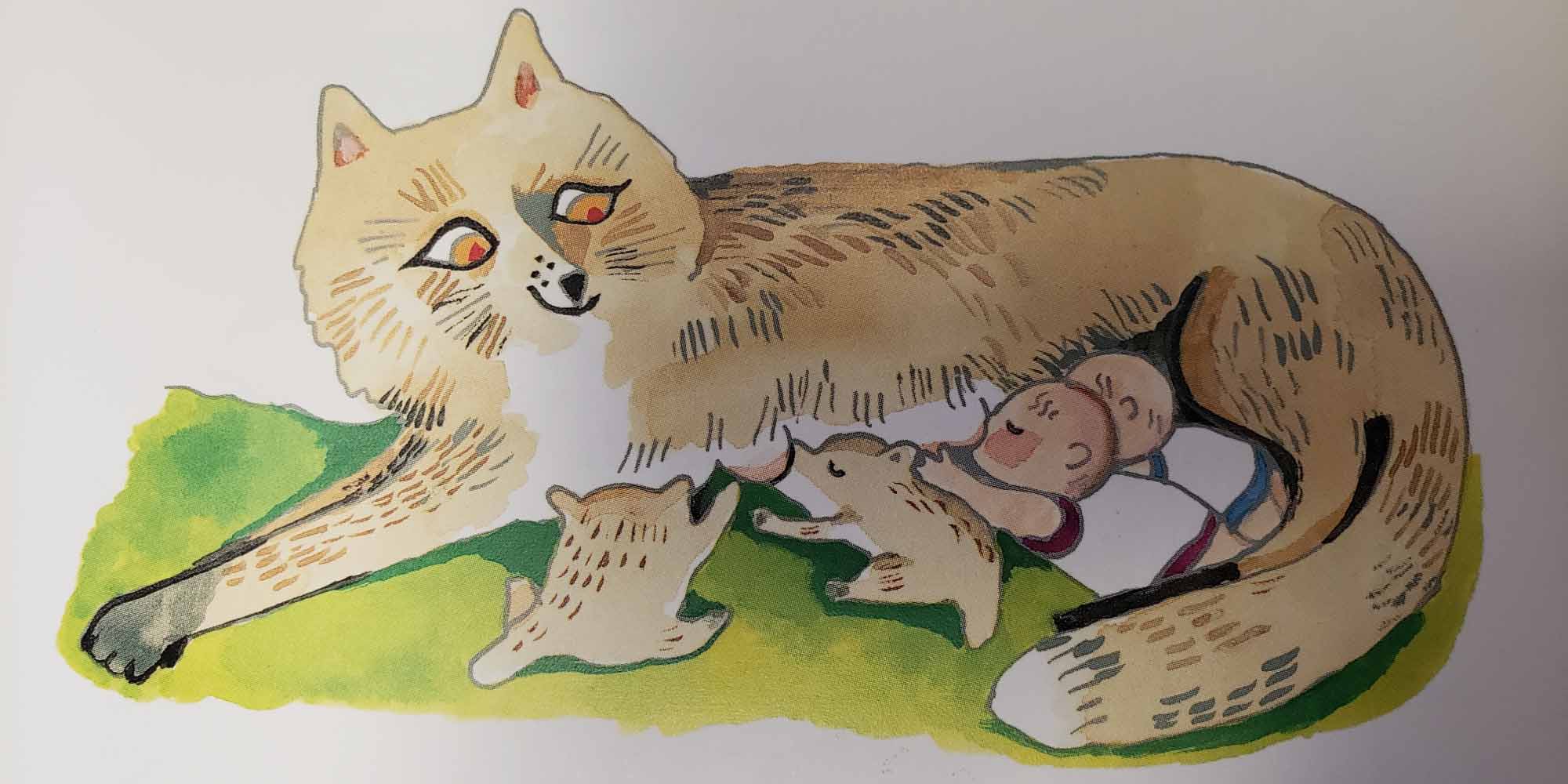
Alyssa Goswell discusses the myth of Romulus and Remus in this month's ACE & Creativity blog, and observes how it has become Disneyfied.
The Walt Disney Company has retold many traditional stories over the years, from Snow White to Tangled . In these retellings, Disney changes certain elements of the traditional stories to make them more acceptable to modern audiences. For example, violence is very common in traditional tales but is rarely seen in Disney; also, many include humor that would not have been included in the traditional tales. Therefore, Disney changes traditional tales from being scary and full of warnings to being fantastical tales full of magic and happy endings.
'Disneyfying' Myths
In our analysis of YouTube videos and comments on the myth of Romulus and Remus, we have observed that many seem Disneyfied. The videos with the most notable changes were created by students for school projects, with the largest number of modifications notable in videos made by primary school students. One of the most consistent changes to the myth across all levels of student videos is the relationship between Mars and Rhea Silvia: they are consistently perceived as falling in love and getting married or being in a stable relationship before Rhea becomes pregnant with the twins. These changes echo “family values” that prioritize marital relations over other forms of family.
Additionally, Rhea Silvia is almost always referred to as being a princess; although this is true in the sense that she is the daughter of a king, ancient Romans did not have the concept of a “princess”. Disney, however, has a whole product line devoted to princesses. Some retellings include that Rhea is a Vestal Virgin, with some not using the term and instead saying she is a priestess of Vesta, but they omit what happens to Rhea after she has the twins, keeping violence out of the myth. This is similar to Disney’s alterations to the original Snow White fairy-tale, where in the original tale the evil queen was forced into red-hot iron slippers and forced to dance until she died.
The myth of Remus
Then there are the modifications to Remus. When the brothers decide to found their own city, they cannot agree on which hill the city should be founded on and augury is used to determine which hill. This leads to tension between the brothers and ends up with Romulus building a wall and Remus getting killed for crossing it and/or taunting Romulus. In the retellings of the myth Remus’ role varies. Ancient authors disagreed about the murder of Remus, but they agreed that he died violently, either by the hands of Romulus or by one of Romulus’ supporters. Likewise, Remus’ role varies in the retellings of the myth on Youtube. In some versions Remus dies as a child, leading to questions of how Romulus found out about his lineage, or Remus dies before the decision to found a city. In other versions Remus runs off to the wilds because he would prefer to hunt than to found a city (Rockwell, 40). These modifications make the story more child-friendly and remove his murder altogether from the myth, which also leaves Romulus’ hands clean of fratricide. This change is particularly interesting because we know that some Romans were also uncomfortable with the idea of Romulus committing fratricide (e.g. Horace, Epode 7).
There are also the changes that modify how the twins were brought up, specifically the she-wolf’s involvement. In some of these Disneyfied retellings of Romulus and Remus the she-wolf is the one who raised the twins from when she found them on the riverbank as babes until they are teenagers. This is a big modification as in the original myth the twins are found and nursed by the she-wolf but are found by Faustulus shortly thereafter. The change to have the twins raised by the wolf make the story more fantastical and lead to commenters comparing the twins to Mowgli from The Jungle Book, where he is also raised by wolves.
These retellings omit other aspects of the myth as well. They do not tend to continue past the death of Remus (if that aspect is included) or the beginning of the founding of Rome. Thus, these versions leave out the Sabine women and the death and subsequent deification of Romulus.
Comparing to Hercules
These modifications can be compared to the changes Disney made in the movie Hercules. Changes made in these myths made the stories suitable for children in the eyes of Disney executives. In Hercules the origins of Hercules are modified: instead of Zeus being adulterous they have Hercules being the son of Zeus and Hera, who are married. This forced them to change even more of the myth, making Hades the bad guy who kept trying to kill Hercules by sending monsters after him, instead of Hera hating Hercules and being responsible for the trials. The trials are included in the movie, but they are displayed not as trials that Hercules is choosing to partake in and are instead part of Hercules becoming a hero by saving others. We can see the changes to the Romulus and Remus myth on YouTube as similar to the changes Disney made to Hercules: they import modern Christian values such as marriage and salvation into the ancient world.
Bibliography:
- “Epode VII - The Threat of Civil War.” Translated by A.S. Kline, 2005. https://www.poetryintranslation.com/PITBR/Latin/HoraceEpodesAndCarmenSaeculare.php#anchor_Toc98670055.
- Rockwell, Anne. Romulus and Remus. New York: Simon & Schuster, 1997.